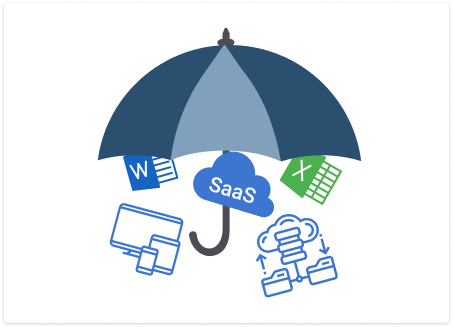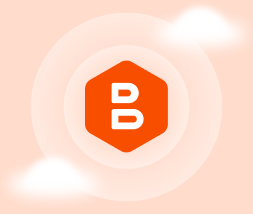MSP Business
Starting an MSP Business
Starting a managed service provider business is hard work, and it requires careful planning to be carried out successfully. It can be tempting to dive right in and start offering technical services -- after all, that’s what you know best if you have worked in IT before -- but it’s important to ensure that you start your MSP business properly by defining your offerings effectively, establish an appropriate pricing strategy, set up the right workspace and start off on the right foot with your first clients.
Keep reading for tips on starting a managed service provider business. We’ll cover everything from how to formally set up the business, through the onboarding process for your first clients. At the end of the guide, you will find the quiz about starting an MSP business with questions based on the content of this MSP startup guide. Take it and see if you are ready to start your own managed services company.
Before You Start Your MSP Business
Before you can start providing managed services, you need to establish your business. Common steps in the process include:
- Register a domain name and set up a website for your business.
- Create (or commission) a logo.
- Obtain a phone number.
- Register the business as an LLC or another type of corporate entity.
- Find an accountant, an attorney and any other business professionals you may need to help run the business.
- Set up a bank account for the business.
- Create an SLA template for use with the business.
- Find office space (to keep your travel costs low, it’s wise to set up shop close to your target clients).
If it’s your first business, remember to keep your documents and records in order. One day it will save your life.
Develop Your MSP Offering
 Another basic step in starting an MSP business is to define which specific technical services you will offer, and how you will bundle them together. Although you may be able to perform a range of technical services, it’s important to determine which ones will bring you the most business at the most profitable rates.
Another basic step in starting an MSP business is to define which specific technical services you will offer, and how you will bundle them together. Although you may be able to perform a range of technical services, it’s important to determine which ones will bring you the most business at the most profitable rates.
One factor to consider in this regard is which MSP services are in greatest demand in your area. If the local market for managed network services is already saturated, you may want to avoid including those as part of your business and, instead, focus on other services (such as managed backup or managed security) that are in greater demand.
You’ll also want to think about which services you can offer most effectively and cost-efficiently.
- Which technical areas do you know best?
- For which types of services will it be easiest for you to find qualified employees?
- Will offering some services require you to purchase specialized hardware or software tools?
 In most cases, you’ll decide to offer more than one service. So you need to determine how to combine your different services into a single package, or bundle. As we explain in our guide to MSP packages, bundling makes service offerings easy for customers to understand and consume, while also simplifying things for the MSP.
In most cases, you’ll decide to offer more than one service. So you need to determine how to combine your different services into a single package, or bundle. As we explain in our guide to MSP packages, bundling makes service offerings easy for customers to understand and consume, while also simplifying things for the MSP.
Further reading MSP Packages: How to Build Your Offer
Determine Your MSP Pricing Strategy
There are many different pricing models and strategies that MSPs can follow, each with different advantages and drawbacks.
At a high level, MSP pricing strategies can fall into one of two categories.
 The first is “All You Can Eat” pricing. Under this model, you charge a certain price to deliver a service for a certain amount of time (such as a month or a year), and the customer can consume as much of that service as they choose during that time. All You Can Eat prices are typically set based either on the number of devices you will be supporting or the number of users.
The first is “All You Can Eat” pricing. Under this model, you charge a certain price to deliver a service for a certain amount of time (such as a month or a year), and the customer can consume as much of that service as they choose during that time. All You Can Eat prices are typically set based either on the number of devices you will be supporting or the number of users.
 The second overarching pricing strategy is break-fix. With this approach, you define the cost of certain services, and customers pay only when they use a service, rather than paying a fixed monthly rate.
The second overarching pricing strategy is break-fix. With this approach, you define the cost of certain services, and customers pay only when they use a service, rather than paying a fixed monthly rate.
You can, of course, use a combination of All You Can Eat and break-fix pricing. In fact, that is what the majority of MSPs do.
For more tips on developing an effective pricing strategy, refer to the following guide:
Further reading MSP’s Guide to Pricing


Choose Your Software
 Most MSPs rely on an arsenal of software tools to help them do their jobs, ranging from remote management and monitoring software to helpdesk management platforms, to backup and recovery tools. Also, a free backup software is always a great starting point to recommend.
Most MSPs rely on an arsenal of software tools to help them do their jobs, ranging from remote management and monitoring software to helpdesk management platforms, to backup and recovery tools. Also, a free backup software is always a great starting point to recommend.
There are multiple tools available in each category. The specific solutions you decide to use are up to you, but you’ll want to spend some time as you start your MSP business on evaluating different options and weighing their costs and benefits.
If you’re considering adding a new MSP backup software to your MSP software stack, take a look at MSP360 Managed Backup. With this solution, you can enhance multi-tenant management, allowing your business to scale easily without sacrificing time or user experience, and avoid vendor lock-in, since MSP360 lets you bring your own storage.
- Cross-platform backup and recovery
- Flexible licensing
- Bring-your-own storage approach


If you’re currently managing fewer than five devices or are just getting started, MSP360’s cloud backup solution for small businesses might be the right fit for you. It allows you to conveniently manage smaller yet diverse environments with ease.
Prepare Your Workspace
 Once you have secured office space, you’ll need to devote time to set up your hardware and phone system. You may also need to put in place the cloud-based infrastructure that you’ll be using to support your business.
Once you have secured office space, you’ll need to devote time to set up your hardware and phone system. You may also need to put in place the cloud-based infrastructure that you’ll be using to support your business.
Find Your First Clients
 Once you have completed all of the hard preparation work to start your MSP business, you’re finally ready to find your first clients. Of course, finding clients can be a challenge, especially if your background is in technical services, rather than marketing or sales.
Once you have completed all of the hard preparation work to start your MSP business, you’re finally ready to find your first clients. Of course, finding clients can be a challenge, especially if your background is in technical services, rather than marketing or sales.
Fortunately, finding MSP clients is not as hard as you might think. There are a variety of strategies you can employ:
- Ask for referrals (from friends, business partners, and other customers, once you establish a customer base).
- Establish an effective Web presence both to help clients find you and to instill confidence in the legitimacy of your business. A Web presence includes not just a website but also appearing in places like Google Reviews.
- Partner with existing companies. Remember, not all other MSPs are your enemies; some might be willing to partner with you and send customers your way if the customers are not a good fit for their own business (because, for example, the customers need services that your partner doesn’t offer).
- Be personable and professional. Marketing is an art, and it takes time to learn, but being personable and professional is one of the basics. Introduce yourself to decision-makers at prospective client companies and let them know which services you offer while avoiding being overly pushy.
- Use discounts sparingly. It can be tempting to discount your services heavily when you are starting a managed service provider business, in order to attract new customers. This is not usually a good idea, however, because lower prices decrease the perceived value of your services. They also eat into your profit margins.
For more tips on landing your first customers, see our article on the topic:
Further reading How to Get MSP Clients
Onboard Clients Successfully
 Finding clients is only half the battle. You also need to ensure that the onboarding process goes smoothly. When a client relationship is new, small missteps can lead customers to reconsider their decision to work with you. That’s why you should take extra care in ensuring that you integrate all of your new clients’ systems quickly and efficiently, train the customer’s employees effectively in working with you and your systems, and schedule routine check-ins to address any issues that arise during the onboarding process.
Finding clients is only half the battle. You also need to ensure that the onboarding process goes smoothly. When a client relationship is new, small missteps can lead customers to reconsider their decision to work with you. That’s why you should take extra care in ensuring that you integrate all of your new clients’ systems quickly and efficiently, train the customer’s employees effectively in working with you and your systems, and schedule routine check-ins to address any issues that arise during the onboarding process.
For more onboarding tips, check out the following guide:
Further reading MSP’s Client Onboarding Checklist
Transition from a Break-Fix Shop to an MSP Business
The transition from a break-fix shop to an MSP requires strategic planning, a maturity of operations and services, and a thought-through offering. The transition requires some basic steps you need to go through to get from break-fix to a full-on managed IT.
Step 1 - Learn Your Market
- Know your strengths. Evaluate your past experience and find the distinctive skill set that will allow you to stand out from the competition. Focus on these strengths while building your offer.
- Check for dominant business verticals. You may be surrounded by schools and universities, or you may have worked in one of the dominant verticals so that you know the industry-specific pain-points and have a couple of valuable contacts in your notebook. Check out our article with 5 tips for choosing your vertical.
- Choose the right tools. You need to invest in RMM and PSA, automate your routine processes, and review your security stack.
Step 2 – Making the Proposition
When preparing your proposition, remember – your clients are not as tech-savvy as you are. Make sure that your services form a quality package and you know how to tell your customers exactly how helpful these services are to business processes and operational efficiency.
Step 3 - Push Your Break-Fix Clients Towards MSP
You won’t transfer all your break-fix clients to the new business model, but there is a chance that some of them can be transferred to the managed IT model. Here are several approaches that you can try:
- Offer them a discount for the transition – one month free or 10% of the first annual bill.
- Discuss the value of the managed IT model for their business, including streamlined processes, better IT budgeting, safe and thought-through infrastructure.
- Stress the flexibility of the pay-as-you-go model.
- Make sure that your break-fix clients understand that MSP clients now have priority in your workload.


Conclusion
Starting a managed service provider business requires a lot of careful work, from setting a pricing strategy to marketing your business, and beyond. But the difficult planning process is worth it because it will help you avoid issues in the long run by ensuring that your MSP business is set up for success from the start.
We’ll cover everything from setting up the business to onboarding your first client:
- Essential steps of establishing business
- Building the software stack
- Сreating an onboarding structure, and more




